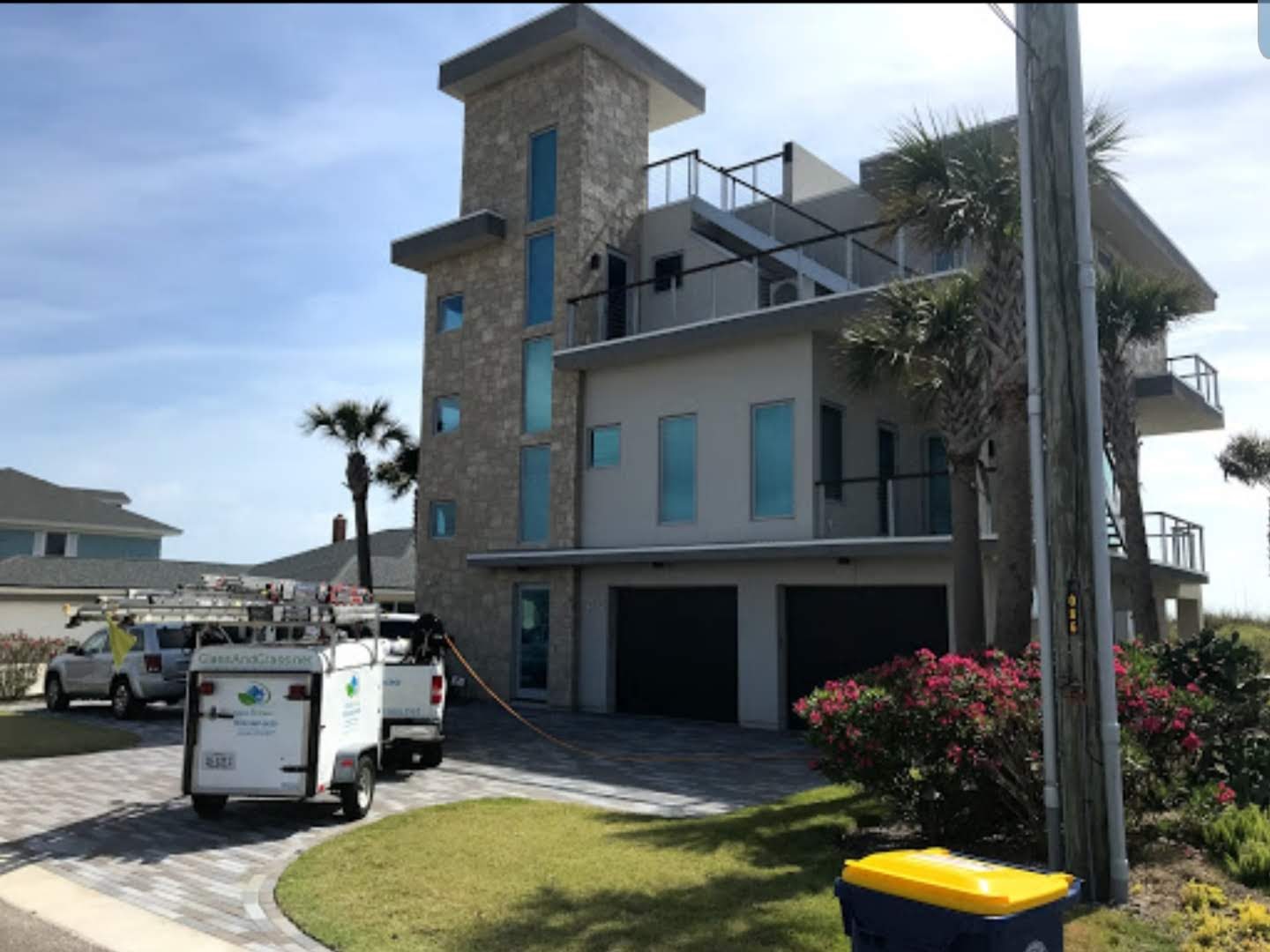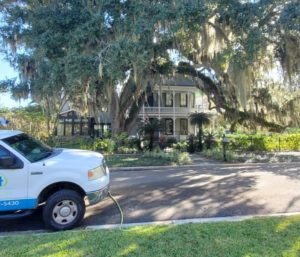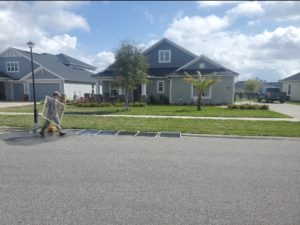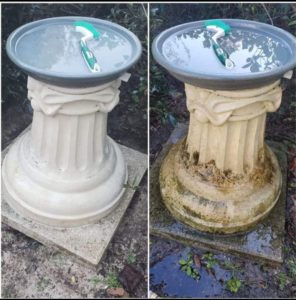House Pressure Washing: A Step-by-Step Procedure
Keeping your house looking its best starts with routine maintenance and includes pressure washing for thorough cleaning. House pressure washing is a specific process that requires knowledge and the right tools to ensure you’ll get the desired outcome, so it’s important to have a grasp on what this job entails before going ahead. In this post we’ll be discussing step-by-step procedures for taking care of pressure washing tasks yourself at home, so read on if you’re interested in keeping your house clean without breaking the bank!

Understand the Benefits of Pressure Washing for Your Home
Pressure washing, also known as power washing, is an effective and economical way to revitalize your home’s exterior. By employing a high-pressure water spray, this technique efficiently removes accumulated dirt, grime, mold, and mildew, significantly improving curb appeal while also prepping surfaces for new paint jobs or other home treatments. A professionally conducted pressure wash extends the life of your sidings, driveway, and wooden decking by safeguarding them against harmful elements, ultimately increasing your property’s value. Opting for regular pressure washing not only enhances your home’s visual appeal but also promotes a healthier living space, making it a smart maintenance investment for homeowners.
Safety First – Be Aware of the Risks and Precautions to Take Beforehand
The paramount importance of prioritizing safety cannot be overstated, especially when undertaking any task or entering a potentially hazardous situation. As professionals, we must be cognizant of the potential risks that surround us daily and take the necessary precautions to prevent accidents and ensure our well-being. This may involve consistently assessing our environment, diligently adhering to safety guidelines, and continuously expanding our knowledge of potential hazards. By fostering a safety-first mentality, we become proactive in defending against potential harm, support a culture of safety within our workplaces, and contribute to the betterment of our society as a whole.
Learn About the Different Types of Pressure Washers Available
Pressure washers have become a must-have tool for both professional and home use, serving as an incredibly efficient means for cleaning a variety of surfaces. These highly effective devices come in different types, each designed to cater to specific needs and preferences. There are electric pressure washers, typically preferred for their quiet operation and low maintenance, which leave them perfect for household cleaning tasks. On the other hand, gas pressure washers boast a higher level of power and mobility, making them ideal for large outdoor spaces or construction sites. Each type of pressure washer has distinct advantages, so when choosing one, it’s essential to consider your cleaning requirements and environment to truly maximize its utility.
Select the Equipment and Detergent Necessary for Your Project
Undertaking a cleaning project requires careful consideration of the equipment and detergent to be used, as they play a fundamental role in ensuring efficient and effective results. It is crucial to choose equipment and cleaning agents that are best suited to the specific needs of your project. To do so, begin by assessing the surfaces and materials involved in the task, as well as the type and extent of dirt and stains that need to be removed. Opt for environmentally friendly and non-toxic cleaning solutions whenever possible, as they contribute positively to the overall health of those using the space. Engaging with professionals who have expertise in this area can be of great assistance, as they can recommend the most suitable products and equipment for your specific undertaking, ensuring a pristine outcome.
Prepare the Area Around Your Home for Pressure Washing
Preparing the area around your home for pressure washing is crucial in order to achieve optimal results and protect your property. As a professional in this field, I recommend starting by removing any furniture, potted plants, or other movable items from the vicinity. Survey the area and ensure that all windows and doors are tightly shut to prevent water from seeping in. Additionally, don’t forget to cover electrical outlets and external light fixtures, or any other sensitive components, with waterproof materials such as plastic sheets or tape. Finally, inspect the exterior surfaces to pinpoint any areas that may require extra attention during the pressure washing process, such as mold or accumulated dirt.
Pressure washing your house can be nerve-wracking and intimidating, but with the right knowledge and preparation, you can have a successful DIY project. Always prioritize safely when pressure washing your house; wear protective gear, gloves, and proper clothing in order to shield yourself from any potential risks. With these steps in mind, you are ready to embark on a perfect pressure-washed home that brings out its natural beauty!
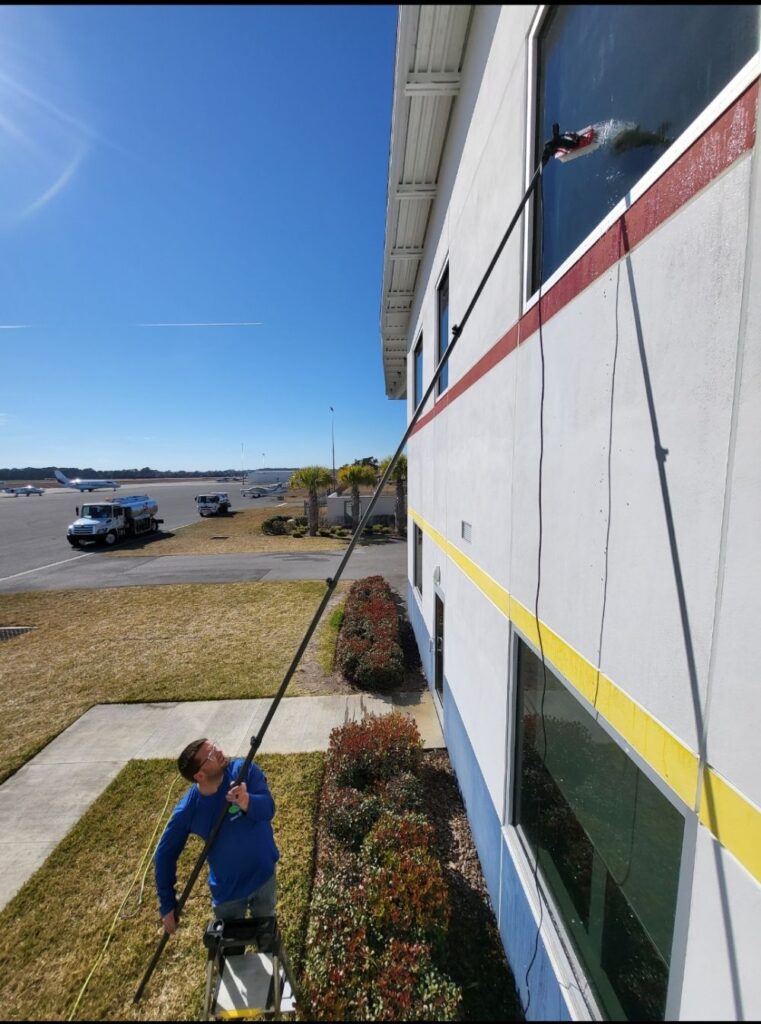
https://www.google.com/maps?cid=664192561973241055


